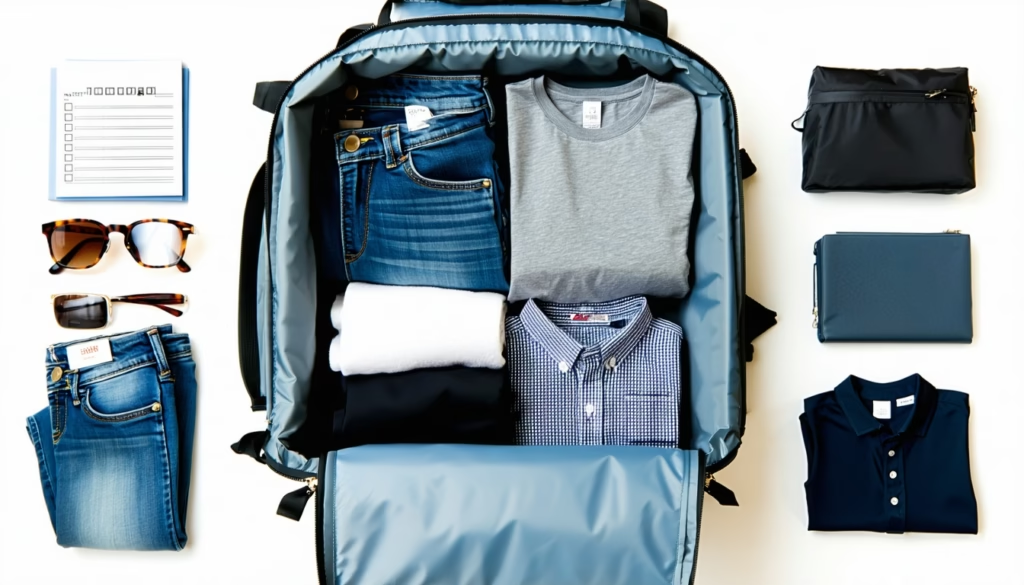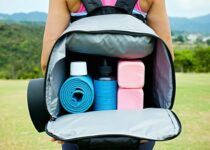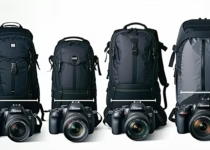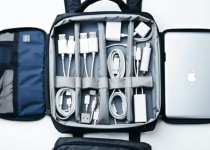How To Plan Outfits In Advance To Reduce Luggage Space

Ever found yourself digging through your backpack, convinced you packed everything but the kitchen sink? In this guide on how to plan outfits in advance to reduce luggage space, you’ll learn simple steps to slim down your wardrobe, mix and match pieces, and pack like a pro. By planning outfits before you zip up your bag, you’ll save time, avoid overpacking, and keep your load light and organized.
1 Define Trip Duration and Activities
Before you touch a hanger, get clear on what your trip involves.
Ask yourself: how many days will you be gone, and what will you actually do?
List Your Daily Plans
- Workdays vs weekend adventures
- Formal dinners or casual strolls
- Unexpected weather stops
Create a Clothing Matrix
Map outfits on a simple grid:
| Day/Activity | Morning | Afternoon | Evening |
|---|---|---|---|
| Travel | Comfy top | Stretch pants | Light jacket |
| City tour | Tee + shorts | Sneakers | Ballet flats |
| Dinner out | Blouse | Slim jeans | Heels or loafers |
| Outdoor hike | Base layer | Hiking pants | Fleece midlayer |
With this matrix, you’ll see exactly how many tops, bottoms, and layers you need.
2 Plan a Capsule Wardrobe
A capsule wardrobe is a small, curated collection of versatile pieces. It keeps your pack light and outfits fresh.
Choose a Color Palette
Stick to three to four complementary colors. Neutral tones like black, navy, gray, and white pair with a pop of your favorite shade.
Pick Essential Items
- 3–4 Tops (mix tees, blouses, or shirts)
- 2–3 Bottoms (jeans, skirts, or lightweight pants)
- 1 Light jacket or blazer
- 1 Versatile dress or jumpsuit (optional)
When you limit your options, every item works with the rest.
3 Mix and Match Outfits
Mixing and matching turns a handful of pieces into dozens of looks.
Create Outfit Formulas
Use simple templates like:
- Top + Bottom + Accessory
- Dress + Jacket
- Base layer + Midlayer + Scarf
Visualize Combinations
Snap photos of each outfit on your phone. You’ll avoid last-minute panics and keep your backpack under control.
4 Optimize Layering Techniques
Layering helps you adapt to changing temperatures without packing bulk.
Understand Layer Roles
- Base layer (moisture wicking)
- Midlayer (insulation)
- Outer layer (weather protection)
For more on layering fabrics and techniques, check our step-by-step guide to layering clothes efficiently when packing.
Compare Common Fabrics
| Fabric Type | Weight | Packability | Warmth When Wet |
|---|---|---|---|
| Merino Wool | Light | High | Excellent |
| Synthetic Blend | Very light | Very high | Moderate |
| Cotton | Medium | Low | Poor |
5 Select Versatile Footwear
Shoes can eat half your space, so choose pairs that work overtime.
Limit Your Options
- One casual pair (sneakers or loafers)
- One dressy pair (boots or slip-ons)
Put shoes in a dedicated pouch or shoe bag. See our tips on how to pack shoes without wasting suitcase space.
6 Pack Accessories Smartly
Accessories can elevate basic outfits while taking minimal room.
Use Small Pouches
Group belts, scarves, and jewelry in zip-lock bags or small pouches. That way you avoid tangles and lost earrings.
Pick Lightweight Pieces
- Silk scarves
- Thin crossbody belts
- Compact jewelry organizers
7 Organize with Packing Cubes
Packing cubes keep each outfit together and compress fabrics slightly.
Sort by Outfit
Assign one cube per day or per outfit type. Then grab exactly what you need without digging.
Label and Stack
Use cubes with mesh tops or labels. Stack them vertically in your pack so you can pull one out without disturbing the rest. For more organization hacks, see how to use packing cubes for ultimate luggage organization.
8 Use Compression Bags
Compression bags shrink bulky items like sweaters and jackets by 30–50%.
When to Compress
- Bulky midlayers or knitwear
- Items you won’t need until arrival
Quick Compression Steps
- Place item in bag
- Seal most of the zip
- Roll from the bottom to expel air
- Close zipper fully
Avoid over-squashing delicate fabrics to prevent creases.
Compare Compression Options
| Method | Space Saved | Setup Time | Packability |
|---|---|---|---|
| Vacuum-sealed bags | Up to 70% | High | Low |
| Roll-and-seal bags | 30–50% | Low | High |
| Compression packing cubes | 20–35% | Medium | High |
FAQs
How many outfits should I plan per day?
Plan one main outfit and one spare for each full day, then add a travel outfit. That way you’re covered for spills or unexpected plans.
Can I reuse a top for different looks?
Absolutely. Swap bottoms, layer a jacket, or add accessories to refresh the same shirt.
Should I include formal attire when backpacking?
Only if you know you’ll need it. A simple dress or shirt that doubles as casual and formal can work wonders.
How do I prevent wrinkles in my packed outfits?
Roll softer fabrics, fold crisp items around packing cubes edges, and unpack immediately on arrival.
Is a capsule wardrobe suitable for all seasons?
Yes, pick season-appropriate fabrics. Swap tank tops for long sleeves, and breathable pants for leggings in cooler weather.
What if the weather changes unexpectedly?
Pack one adaptable layer like a lightweight rain shell that fits over multiple base layers.
How far in advance should I plan outfits?
Set aside 15–20 minutes a day or block one hour total to map outfits. That small investment pays off at packing time.
Conclusion
By planning outfits in advance to reduce luggage space, you’ll skip the last-minute guesswork and travel lighter. Start by defining your daily activities, then build a capsule wardrobe, mix and match pieces, and use smart packing tools like cubes and compression bags. Give these steps a try on your next trip, and you’ll breeze through packing with room to spare for souvenirs or extra snacks.


